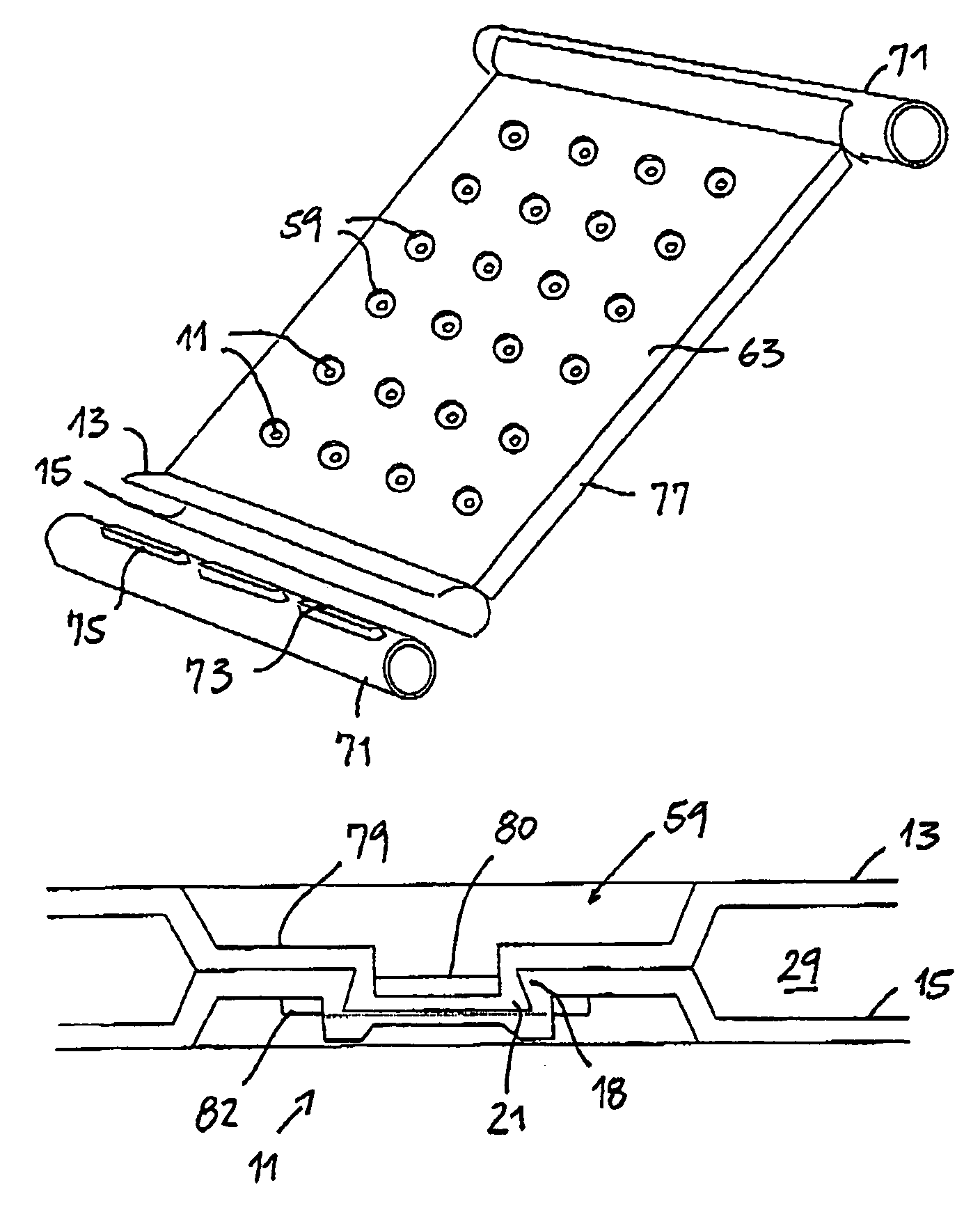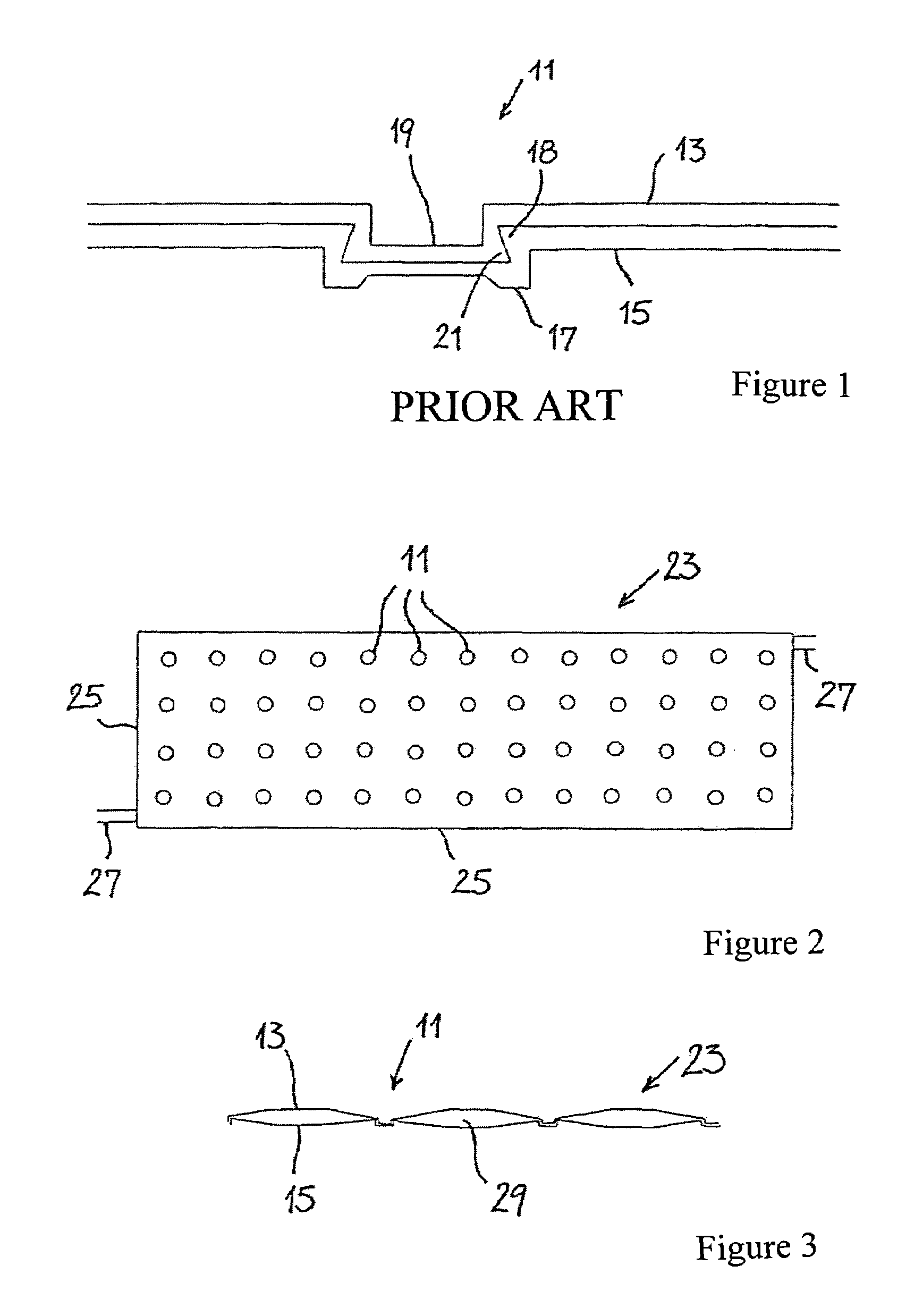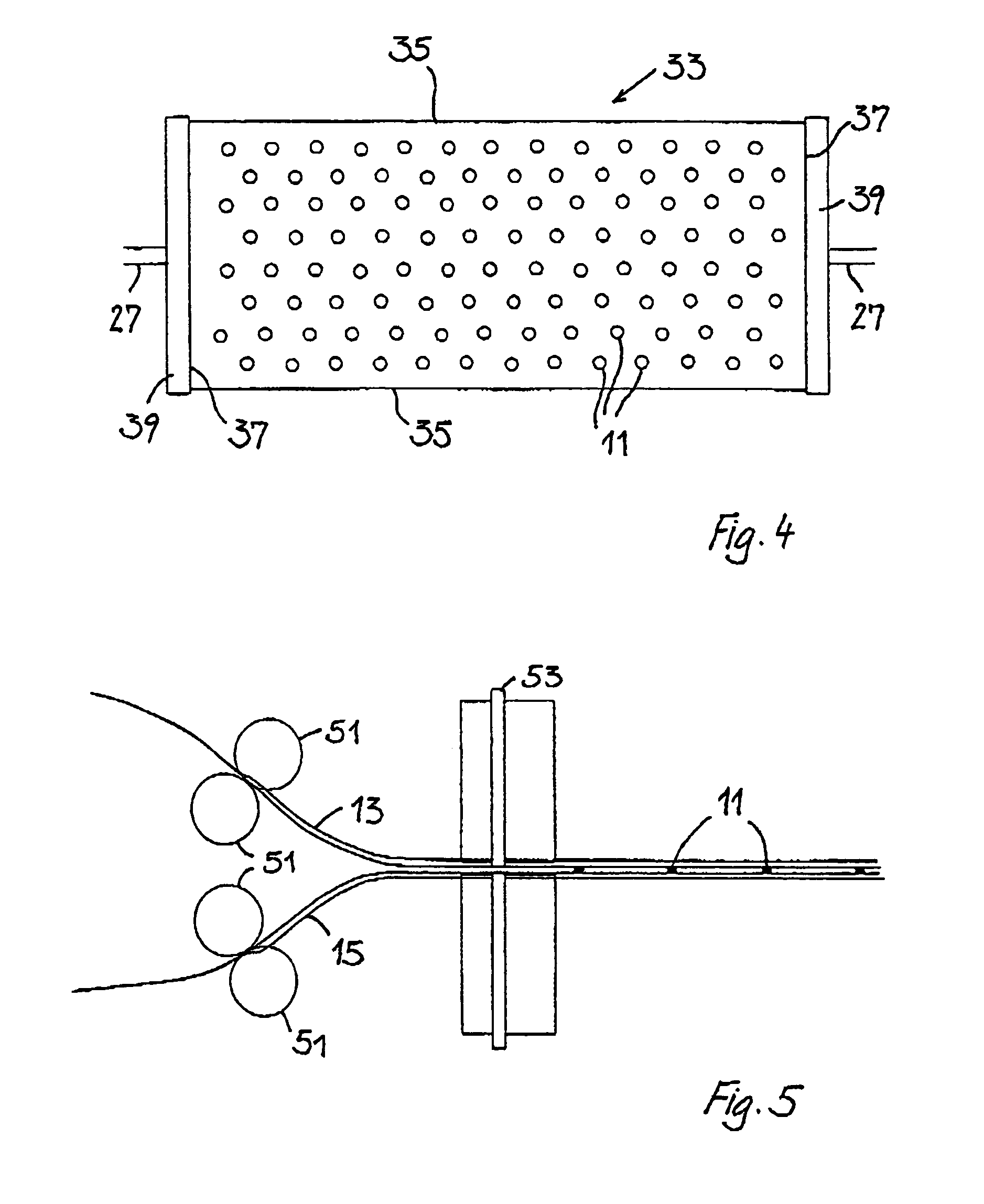Heat exchanger
a technology of heat exchanger and heat exchanger plate, which is applied in the direction of solar heat collectors with working fluids, stationary plate conduit assemblies, solar heat devices, etc., can solve the problems of reducing the heat conductivity of ferrous metals. , to achieve the effect of external pressure, and reducing the internal pressur
- Summary
- Abstract
- Description
- Claims
- Application Information
AI Technical Summary
Benefits of technology
Problems solved by technology
Method used
Image
Examples
Embodiment Construction
[0008]According to the invention, this is attained in that to fasten the walls to one another inside the surface between the edges of the heat exchanger, the walls are made to mesh with one another by deformation of the material. The meshing by positive engagement is accomplished merely by means of an upsetting-pressing operation, without injuring the wall or making a damaging change to the structure of the material. Subsequently both walls remain free of apertures or cracks, so that even loosening of the connecting point need not cause any leakage. Such denticulations can be made linearly on the order of profile sections, given a sufficient material thickness of the wall.
[0009]The material deformation is preferably done in punctate form. The term “punctate material deformation” is understood to mean that the material is deformed at an approximately circular place having a diameter of between 2 and 15 mm, and preferably between 3 and 8 mm, depending on the material thickness of the ...
PUM
| Property | Measurement | Unit |
|---|---|---|
| Thickness | aaaaa | aaaaa |
| Thickness | aaaaa | aaaaa |
| Length | aaaaa | aaaaa |
Abstract
Description
Claims
Application Information
 Login to View More
Login to View More - R&D
- Intellectual Property
- Life Sciences
- Materials
- Tech Scout
- Unparalleled Data Quality
- Higher Quality Content
- 60% Fewer Hallucinations
Browse by: Latest US Patents, China's latest patents, Technical Efficacy Thesaurus, Application Domain, Technology Topic, Popular Technical Reports.
© 2025 PatSnap. All rights reserved.Legal|Privacy policy|Modern Slavery Act Transparency Statement|Sitemap|About US| Contact US: help@patsnap.com



